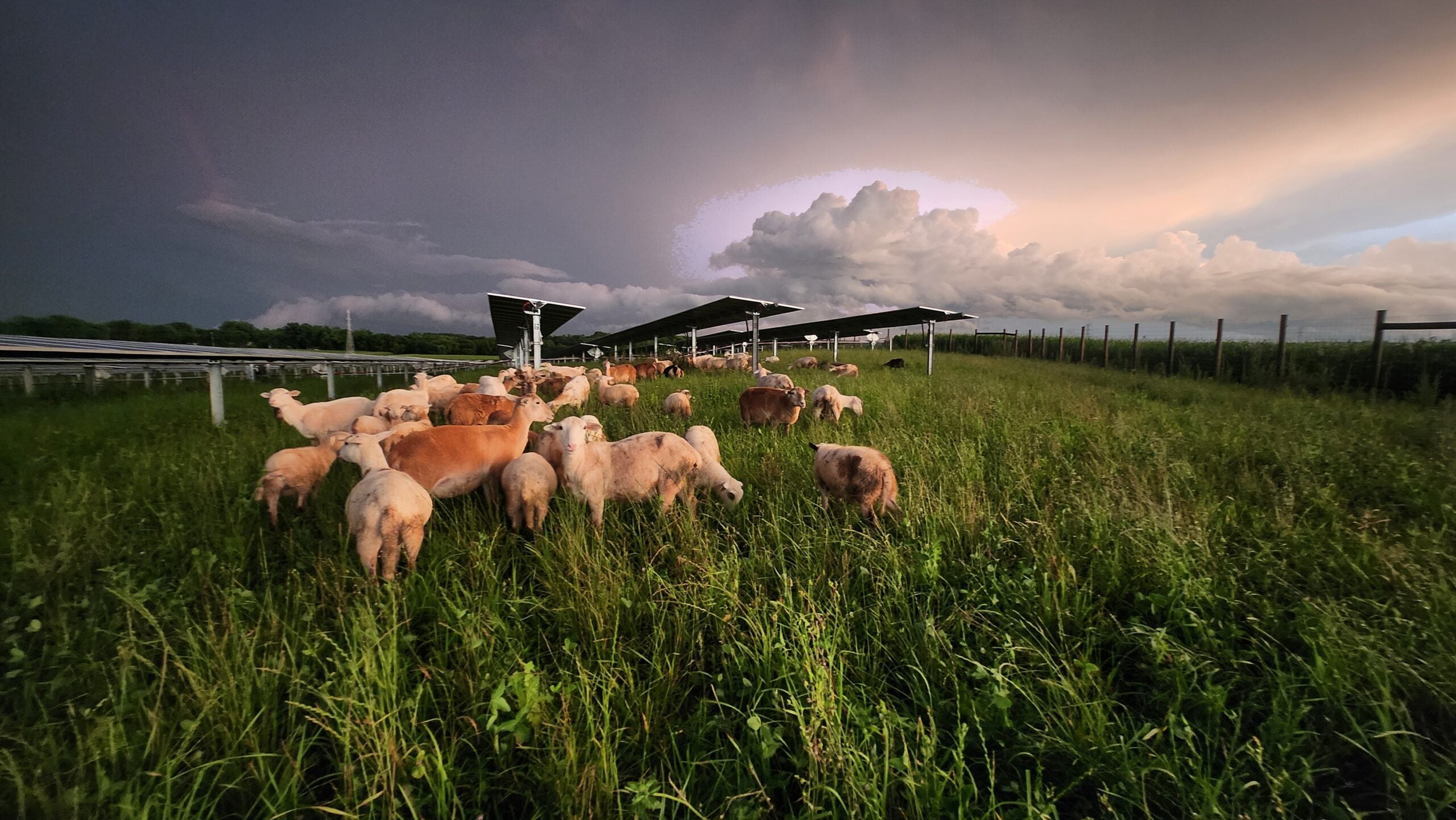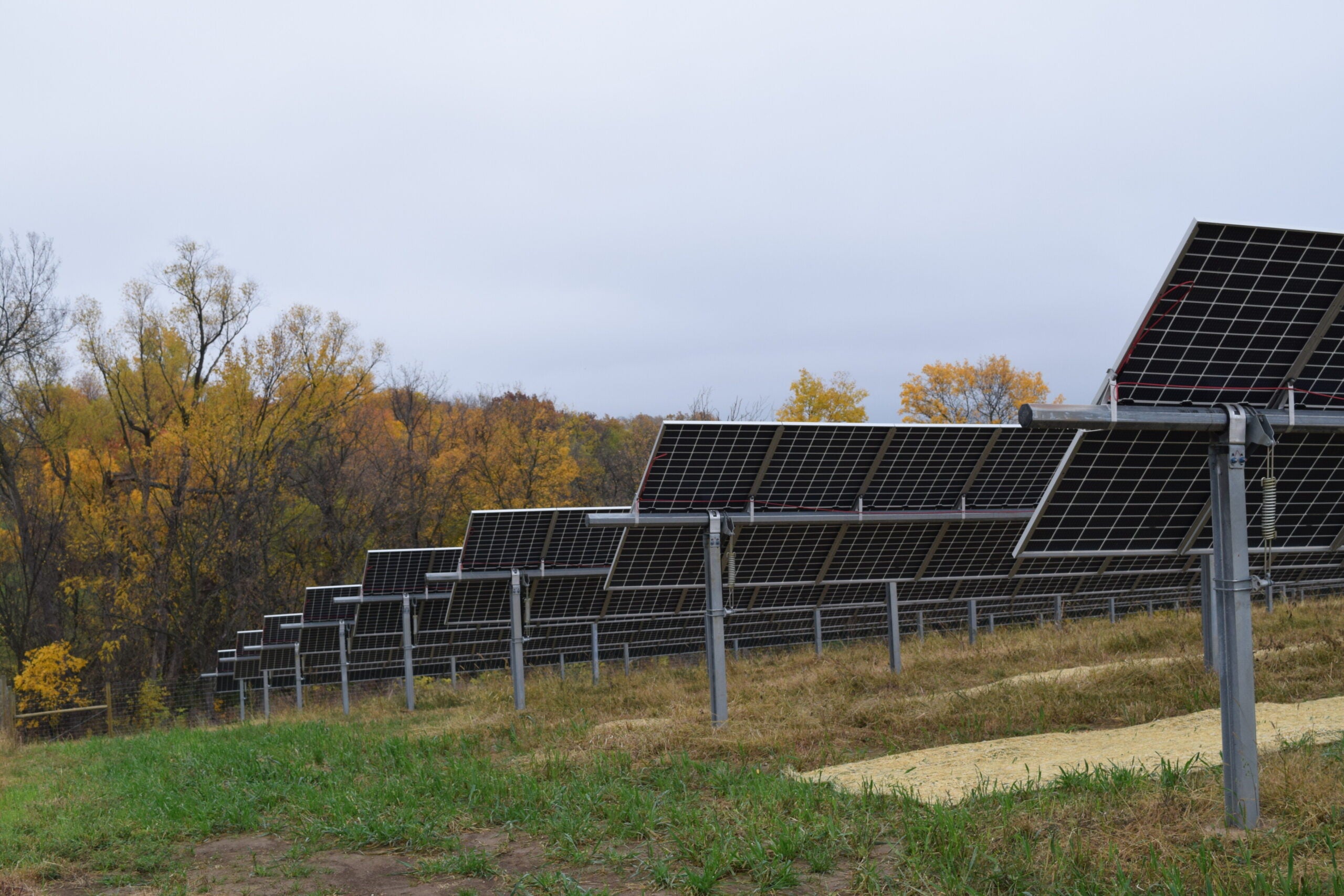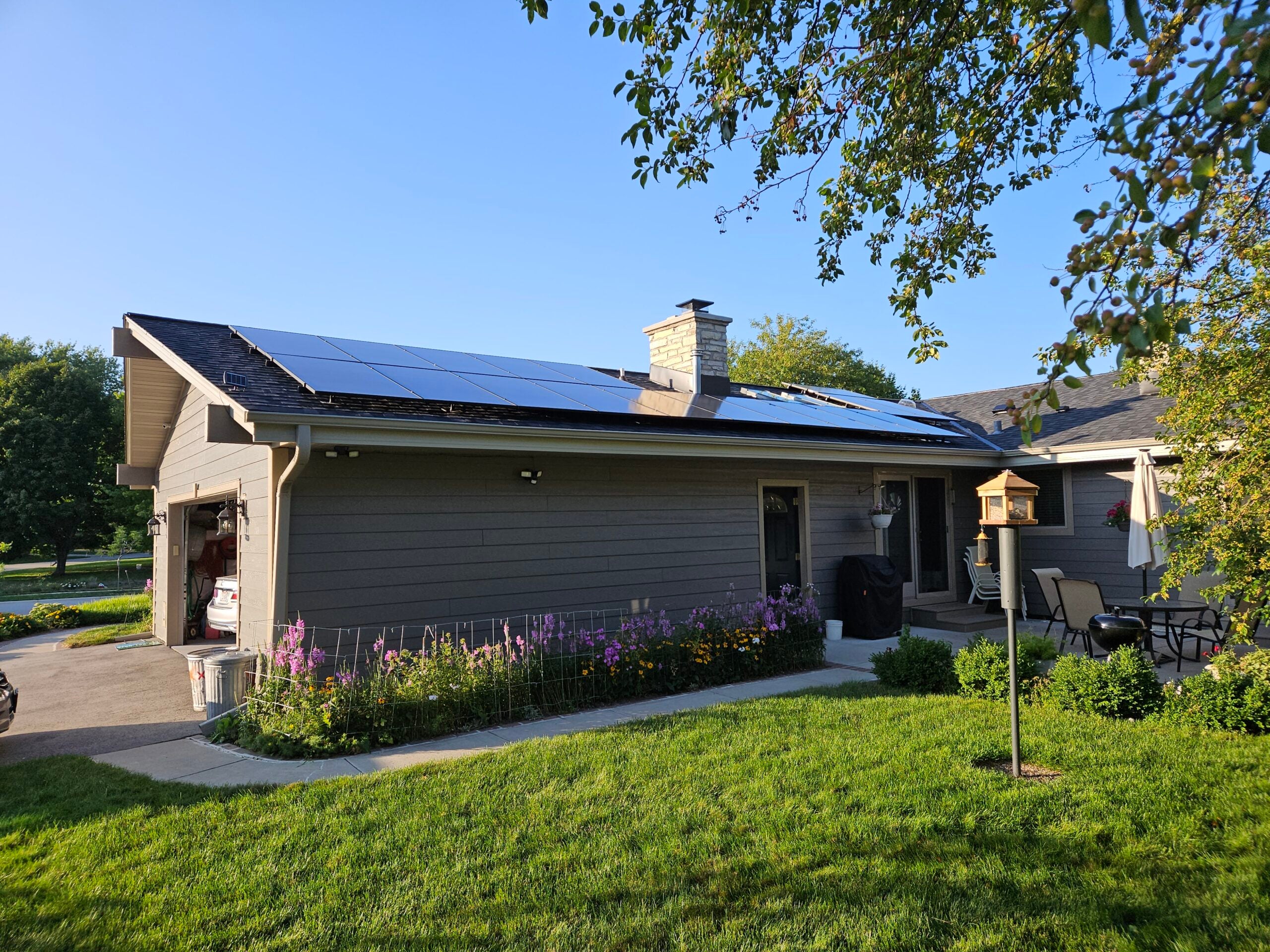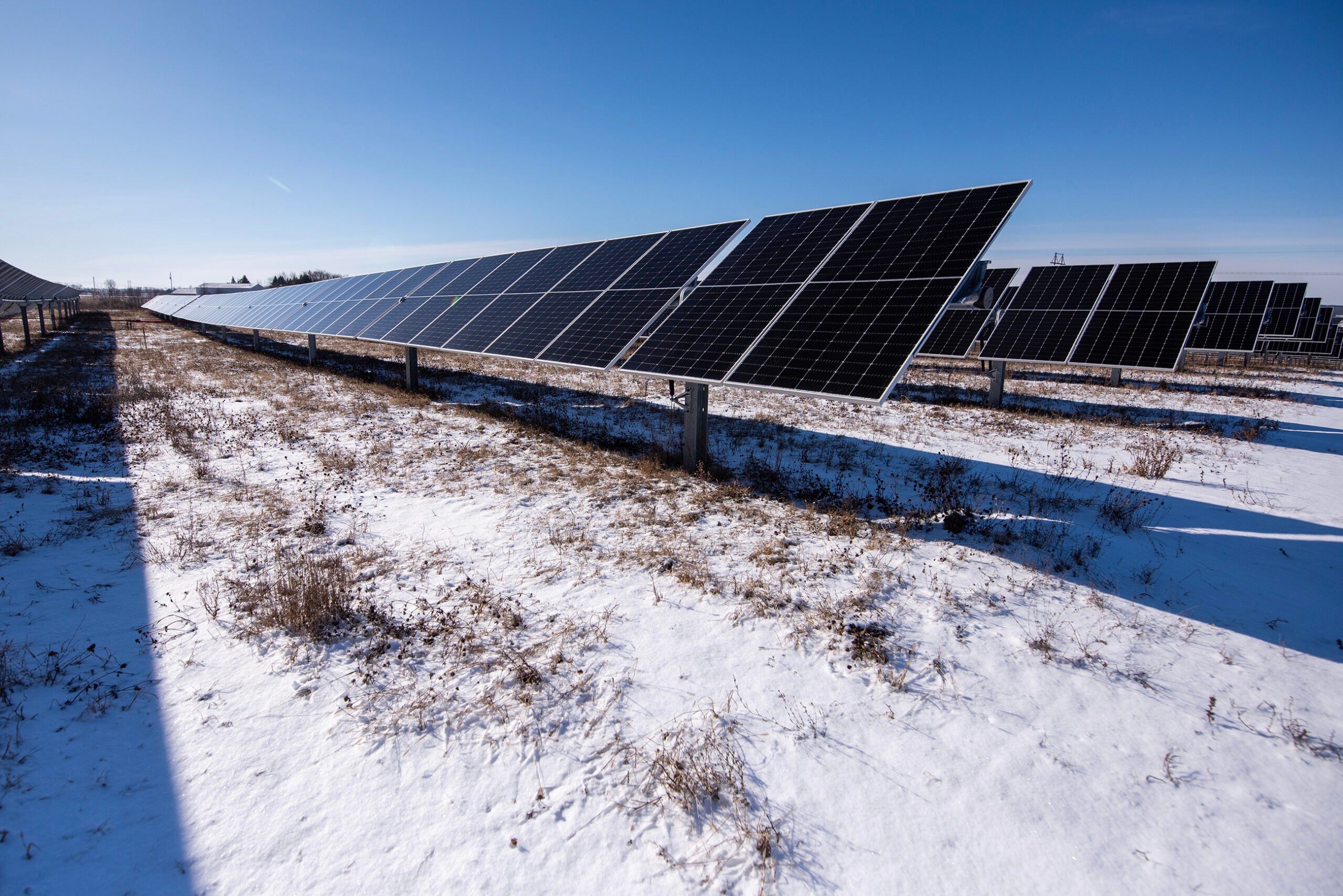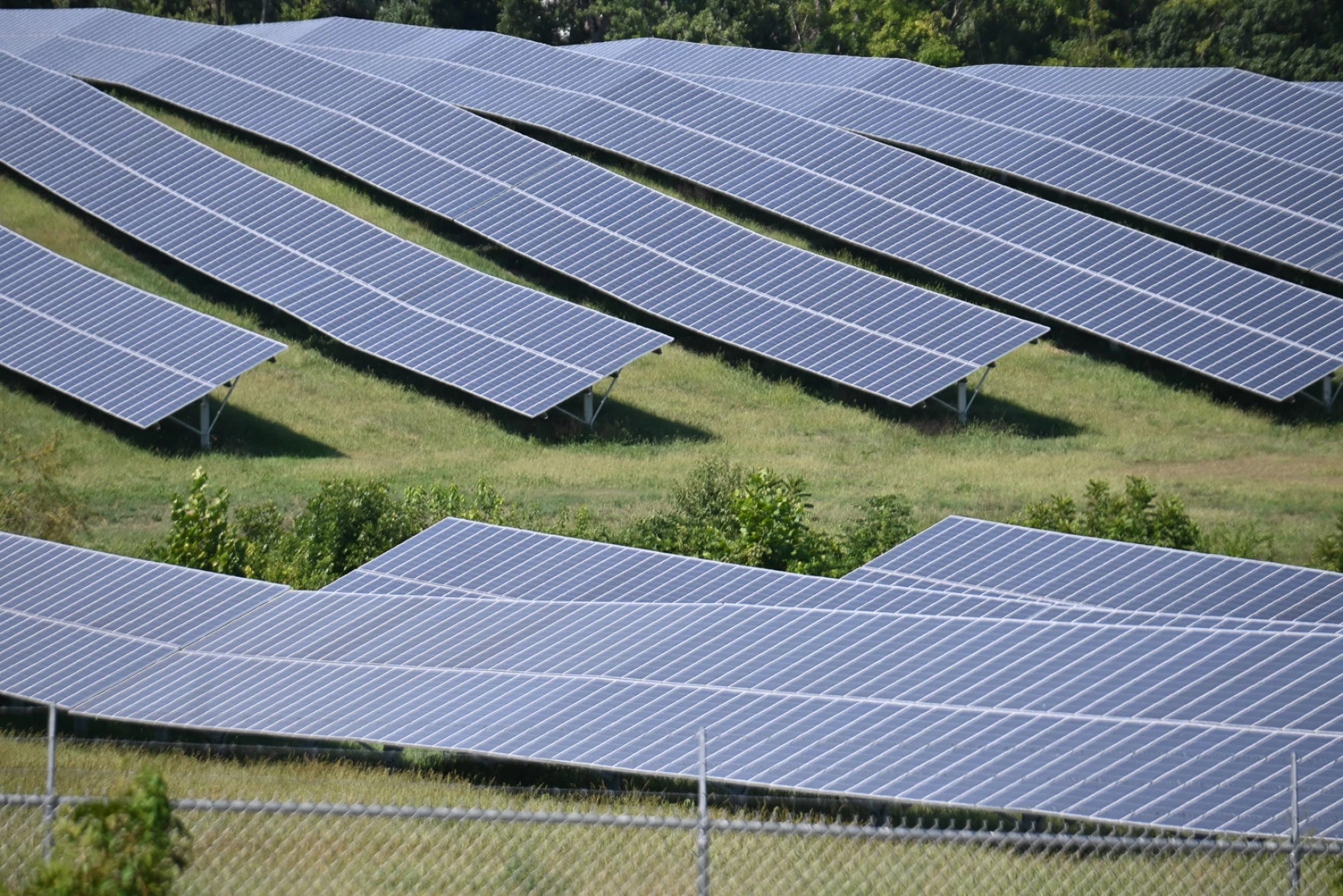When Beau Stafford started Wiscovery Farm in 2019, he never thought that five years later he’d become the first to graze sheep at a Dane County solar site.
The Fitchburg farm started small with garden compost and small hay bales, and eventually got to the point where Stafford wanted to expand into livestock.
“Originally, I figured, ‘Maybe we’ll get some beef cattle and they’d graze about in our pasture land,’” Stafford recalled. “Then, all of a sudden, we get a flier in the mail.”
News with a little more humanity
WPR’s “Wisconsin Today” newsletter keeps you connected to the state you love without feeling overwhelmed. No paywall. No agenda. No corporate filter.
The flier was about a public engagement meeting for a solar site planned near his farm.
Stafford went to an open house to talk with developers about concerns related to what they’d plant at the facility and how it might impact his farm. The conversation eventually turned to the idea of grazing sheep at the solar site. Stafford said that conversation got the wheels turning in his mind.
“As a kid, I helped raise lambs for the fair with my neighbor and I thought, ‘Well, I have experience raising sheep, not running a flock, but at least individual sheep,’” he said. “We have young kids, and we thought, ‘Maybe that would be a better route to go for livestock rather than doing cows or beef, because they’re pretty big and for little kids it’s not great.’”
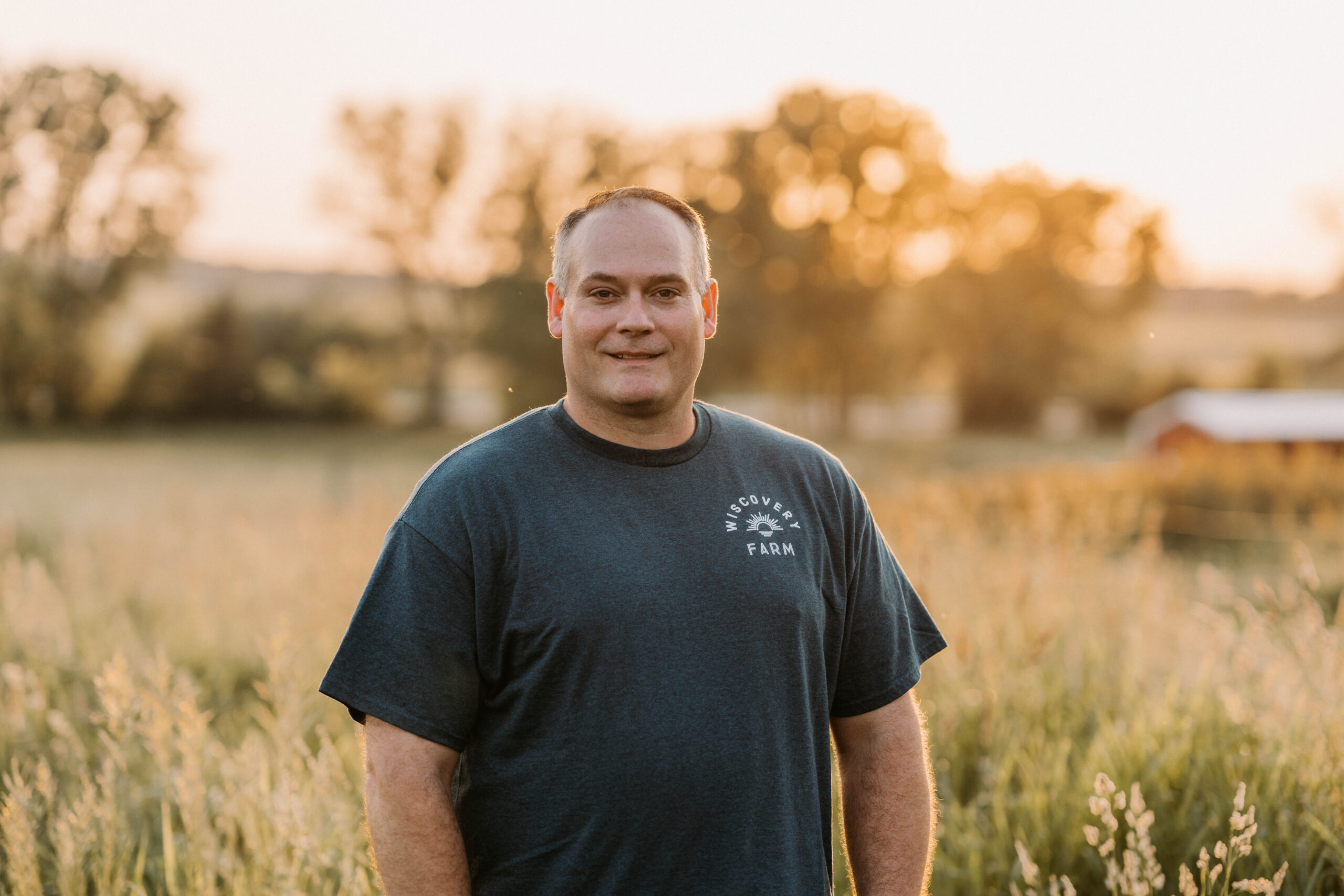
Madison Gas and Electric’s 6-megawatt Tyto Solar project came online in February, located on roughly 45 acres in Fitchburg, according to MGE spokesperson Steve Schultz.
The site features more than 13,000 solar panels that generate enough electricity to serve about 1,400 households annually, Schultz said. It also features 73 of Stafford’s sheep grazing on about 30 acres.
Schultz and Stafford both described the partnership as a win-win.
“For both MGE and Wiscovery Farm, it’s something new, but it’s a great partnership between the two of us,” Schultz said.
Stafford said the collaboration has helped him grow his farming operations because land prices in Fitchburg are “really high.”
“We started our farm well before any talks of any solar development occurred, and it’s the kind of lifestyle that we chose to pursue and having access to 30 more acres is just incredible for us,” he said.
Stafford said the partnership allows his sheep to graze at the solar site in the summer months while he ramps up hay production to feed them in the winter.
He also said the partnership is beneficial to his sheep, too.
“They love it,” Stafford said. “They can find shade anywhere they go.”
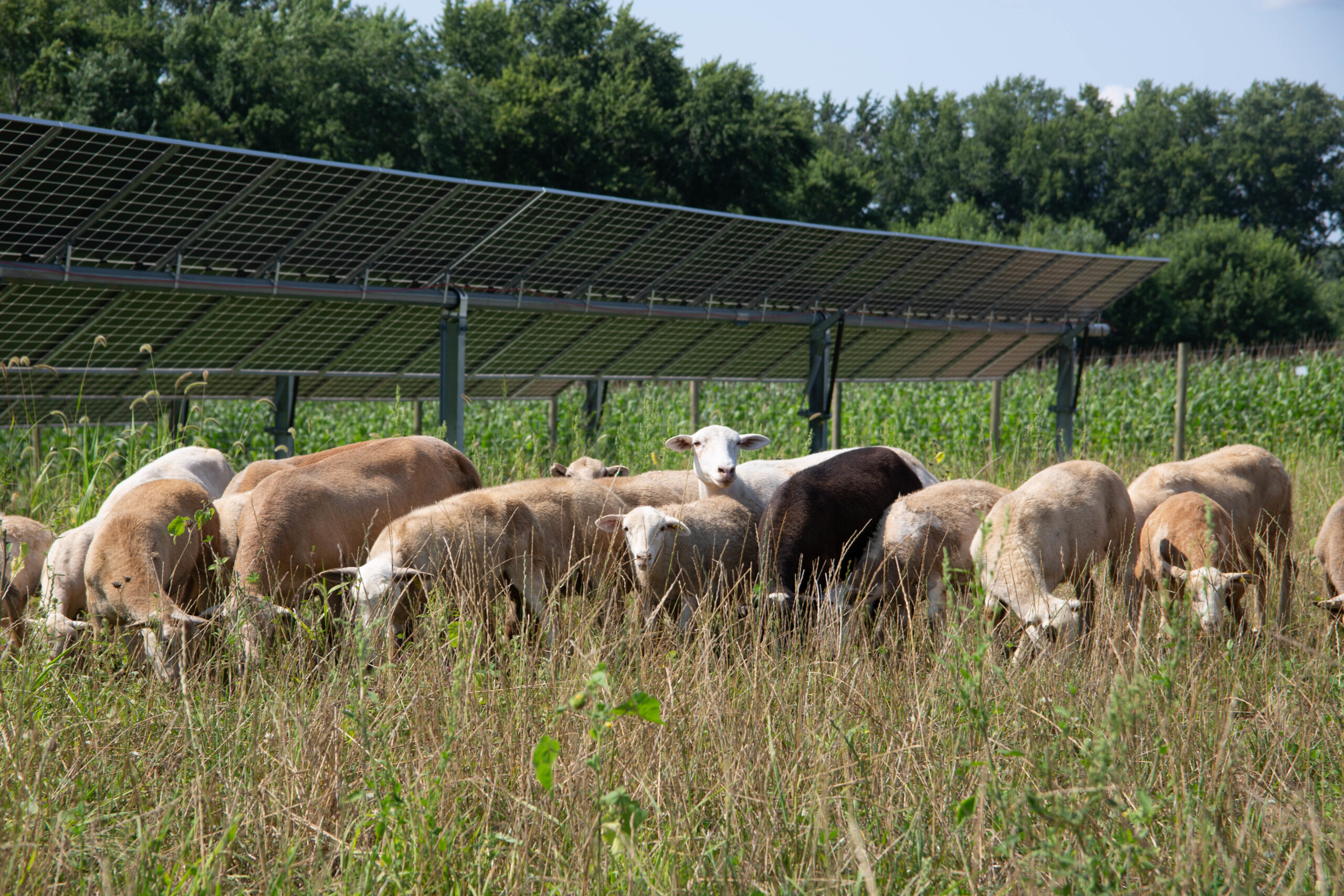
In addition to the Tyto Solar site, the Ledgeview Solar Project near Fond du Lac, which serves Alliant Energy, also is being used to graze sheep.
The practice of grazing livestock on solar farms is known as solar grazing. It’s a form of agrivoltaics, a concept that marries solar projects with agricultural production.
According to the American Solar Grazing Association, more than 80,000 sheep are grazing on 100,000 acres of solar sites across the country.
Schultz said grazing sheep at solar farms helps with vegetation management, allowing operators to cut mowing costs.
“The grazing also avoids fossil fuel that’s used and associated with mowing,” he said.
Solar grazing can also make sheep more productive, as panels can provide shade for the sheep and they can graze for longer durations, according to Alliant Energy. The utility also said grazing improves soil quality through increased soil carbon storage that can help future plant productivity.
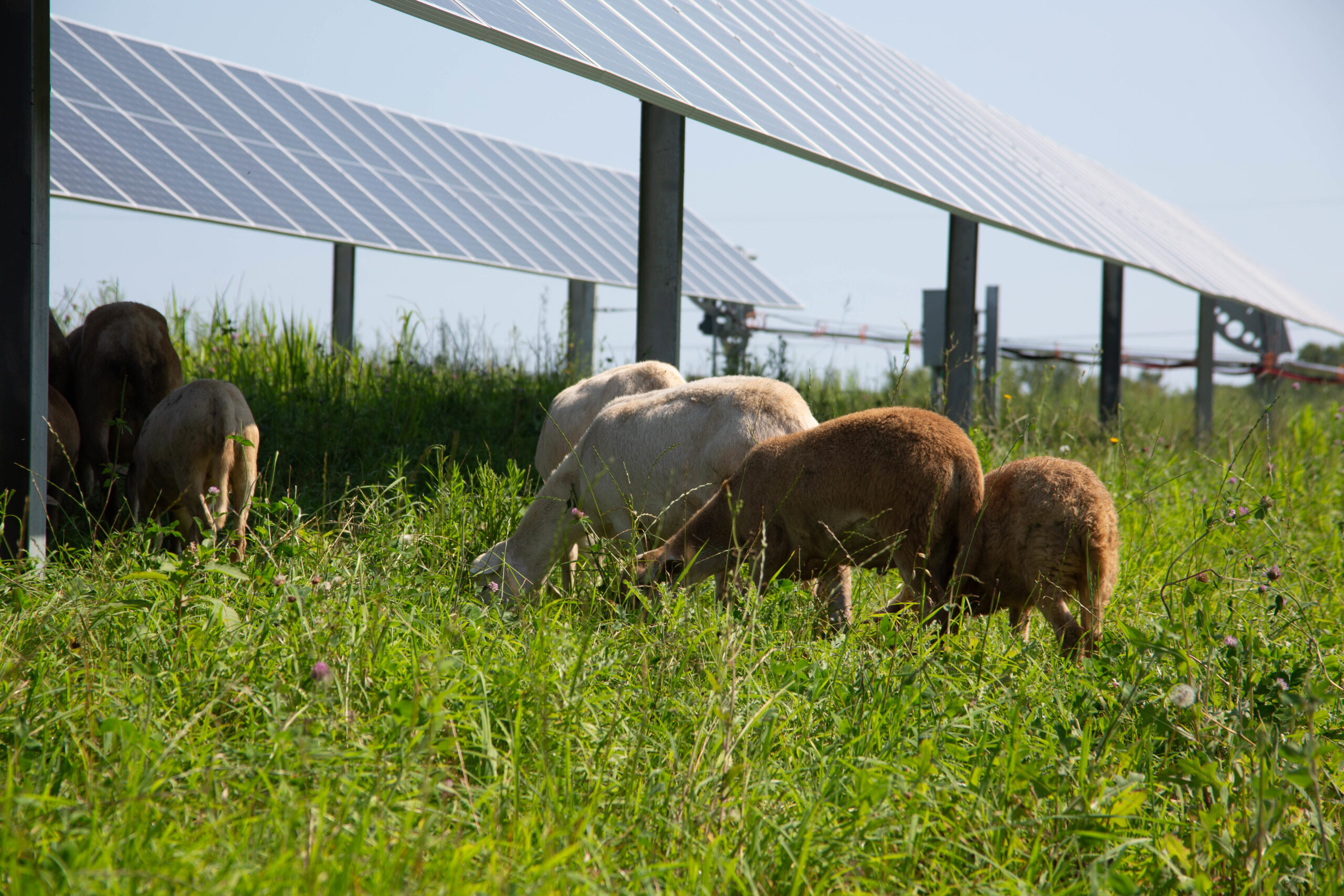
Eric Udelhofen is the vice president of development at OneEnergy Renewables, which developed the Ledgeview Solar Project. That site has a flock of five dozen sheep grazing the pasture under the panels.
Udelhofen said the developer first got involved with solar grazing when it worked on a project for Xcel Energy’s community solar program in Cashton, Wisconsin. As they were building the project around 2018, a neighbor reached out because they were looking for more land to use for sheep grazing.
“We were able to work that out with them for the first couple years of that project’s operation,” Udelhofen said. “That kind of got us thinking about grazing the land within the fence of our solar projects going forward.”
Udelhofen said one of the key benefits of solar grazing, and agrivoltaics in general, is that it allows the land to continue to be used for agricultural production while helping generate carbon-free electricity.
“The acreage within the facility, typically, was farmed before, and this is another way of farming,” he said.
Alliant Energy and the University of Wisconsin-Madison also partnered on an argivoltaics research site near Stoughton, which will feature a small-scale solar site that will produce enough clean energy to power over 450 homes.
As renewable energy continues to expand in Wisconsin, Stafford said he’d like to see argivoltaics expand right alongside it.
“I hope it does become something that solar companies, utility companies, they think first, ‘What is the site going to be for 40 years?’ Rather than just for electric generation,” he said. “I hope they’re looking at, ‘What kind of benefits can we provide for the agricultural community as a whole?’ I think it’s really important.”
Wisconsin Public Radio, © Copyright 2025, Board of Regents of the University of Wisconsin System and Wisconsin Educational Communications Board.

